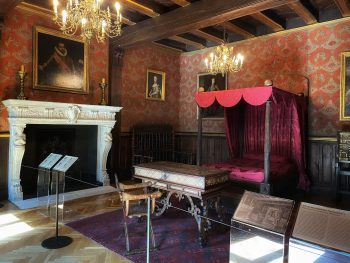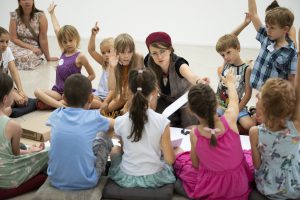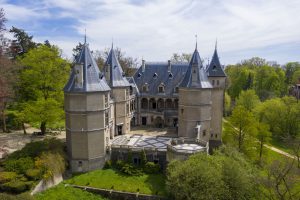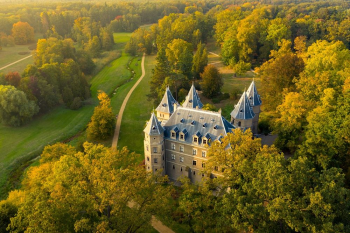Gołuchowski Castle is a unique place architecturally and historically due to its numerous references to prominent individuals, places and phenomena. Built at the turn of the 16th and 17th centuries by Rafał Leszczyński and his son Wacław, it became, after a thorough renovation conducted in the 19th century, a temple of art.
As you leave the castle from the courtyard side, you will find a Latin sentence by Hipolit Błotnicki, referring both to the country’s political situation at the time and the fate of the castle itself NUTU DEI SURGUNT, CADUNT, RESURGUNT ADESQUE REGNAQUE (By the will of God, they rise, fall and rise again, houses and kingdoms).
This thoughtful creation combined excellent art collections with a unique place, becoming a continuation of the museum passion in the Czartoryski family.
Isabel’s decision to move her collections from Paris was greatly influenced by her marriage to Jan Count Działyński in 1857, owner of the Gołuchów estate and ruins of the old Leszczyński castle. Sharing similar interests, the couple presented their collections together for the first time at the Krakow Antiquities Exhibition, and the period of intensified collection purchases by Izzy and Jan Działyński was closed by participation in the World Exhibition in Paris in 1868.
At the turn of 1842-1843, Edward Count Raczyński published an interesting publication, “Memories of Greater Poland”, presenting monuments of the Poznań, Kalisz and Gniezno provinces. They were accompanied by a separate folder with 58 engravings, among which we find the Gołuchów castle, captured by Konstancja Raczyńska. Next to the destroyed building, shown from the west, the well-preserved first floor courtyard with galleries is also visible. The older building – the defensive manor – consisted of a tower house reinforced in the corners with four octagonal towers, closing the layout from the north side.
In June 1872 Jan officially handed over the estate to his wife and confirmed the transfer of her collection of ancient vessels collected during the Parisian emigration.
The decision to rebuild the castle made by the Działyńskis after 1872 changed the scope of collector purchases and subordinated their actions to the needs of the building renovation. The search for a satisfactory reconstruction project took several years. The castle, preserving part of the historical building, received a rich, French neo-renaissance costume. The ruins of the massive four-winged castle were rebuilt into an open park complex with a panoramic belvedere.
Project work on architectural issues emphasizing the medieval and Renaissance beginnings of the castle was carried out by Eugene Viollet-le-Duc, Józef Kajetan Janowski and Zygmunt Gorgolewski.
The choice of architectural decorations defining the stylistic character of the building is due to Maurice-Auguste Ouradou.
In the main entrance, the relics of the old wing were used to create a characteristic early Renaissance gatehouse. The main inspiration was the Parisian Palais de la Cite, to which the shape of the arch above the entrance and the supports of the Gołuchów porch refer.
Particular attention should be paid to the special motif, which is the recurring Leszczyński Wieniawa family crest in the decorations of the castle, referring to the founders of the castle.
In the decorations of the courtyard we find references to many monuments of European culture. Of particular note are:
- Stone stairs with a characteristic lion figure crowning them, leading to the cloister, whose inspiration must have been the Florentine Palazzo Bargello.
- Tile from the floor of the Siena Cathedral, placed in the cloister space.
- A Roman stele from Palmyra crowning the door frame, purchased by Grand Ordynat Prince Witold Kazimierz Czartoryski in Damascus around 1904.
- Mosaic depicting Athena from the 4th century, purchased by Jan Count Działyński in southern Italy.
Until 1939, in the space of the descent to the basement, there was a figure of the Madonna with Child dating from the mid-14th century, purchased for Gołuchów in 1887. However, it did not return here after World War II. Dispersed artifacts from the former collection of the 20th Czartoryski can now be seen in many other museums in Poland and around the world.







